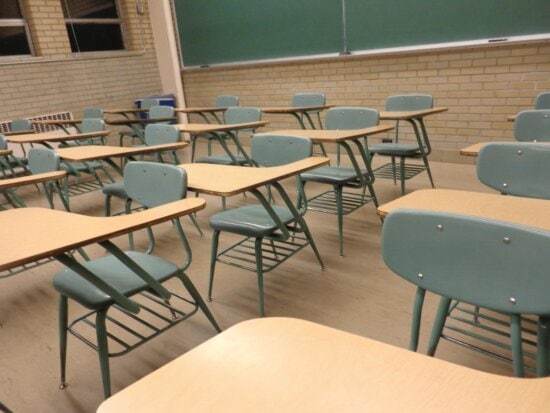By all accounts, the now-shuttered Hampton Elementary University Partnership Magnet School in Guilford County had access to tremendous resources. According to state and district sources, the 130-student school employed 31 teachers, maintained a partnership with N.C. A&T State University that provided assistance and technical support, and offered a 190-day calendar with extended school days.
Yet despite spending nearly $25,000 per student in 2019, only a third of students at Hampton Elementary were proficient in reading, and just less than half were proficient in math.
About 150 miles away is East Robeson Primary School in Robeson County. East Robeson spent a fraction of that amount — a mere $11,728 per student — enrolled a larger share of disadvantaged students, and employed only 39 teachers for its 497 students. Nevertheless, 77% of students were proficient in reading, and 86% were proficient in math.
Niche.com rated East Robeson as the No. 2 Standout Elementary School in North Carolina. The school’s GreatSchools Summary Rating is a stellar nine out of 10.
How do we account for these differences? Does money matter?
While comparisons of school performance have been available for years, the ability to evaluate spending by school wasn’t possible until this year. Like most state education agencies, the N.C. Department of Public Instruction published annual per-student expenditures by school district only. Since the 1970s, the agency dutifully published these figures in a publication called “North Carolina Public Schools Statistical Profile,” which is available as an online tool. After charter school legislation passed in 1996, the agency reported per-student spending for each charter, but school expenditures remained buried deep within district budgets.
Fortunately, a provision in the federal Every Student Succeeds Act required state education officials to report per-student spending for all schools in the state. As school finance experts Lucy Hadley, Elizabeth Ross, and Marguerite Roza point out in a recent research brief, “The hope was that the data would be a game changer in that it would prompt districts to re-examine how they spend dollars across schools, with more intention paid toward equity and improving education.” It’s the laudable goal of using transparency to drive accountability and ultimately improvement.
The authors’ initial assessment of the published data is a positive one, which is surprising given that 2020 generally has been an unpleasant year. States appear to have adhered to minimum data reporting guidelines contained in an interstate financial reporting compact, a critical factor to ensuring the comparability of expenditures across schools and states. That said, accessing the data can be tricky. North Carolina’s school-by-school spending data are not located in the statistical profile but rather on the North Carolina School Report Card website.
Thankfully, education nonprofit BestNC poured state data into an easy-to-use online tool, the Per Pupil Expenditure Interactive Data Explorer. The data explorer allows the user to sort and filter school and district-level data by district, level, and demographics. More important, it includes per-student spending information and student performance measures. A scatterplot displays the relationship between the two. That relationship is anything but consistent.
Of course, researchers employ more sophisticated methods to determine if there is a meaningful relationship between spending and outcomes. These methods control for key differences across schools, such as variations in teacher qualifications or student demographics. Once these factors can be ruled out, researchers can get a relatively unobstructed look at the variables in question. Despite methodological advancements, however, education researchers still disagree about the issue.
On the one hand, some researchers contend that factors outside of the classroom, such as the socioeconomic status of parents, have a greater effect on student performance than school-based factors. This faction believes that schools won’t improve until government imposes measures to eliminate economic and racial inequalities. Others believe that schools with abundant resources can mitigate the effects of external factors. Among the latter group, there are differences of opinion about the kinds and levels of investments that make the most difference.
COVID-19 will muddy the waters further. Most public school students in North Carolina started the school year under a full-time remote learning plan. Students in well-resourced schools may not have access to the internet at home or a broadband hotspot near their home. Further, the successful implementation of remote learning will require an extraordinary amount of parental involvement, clear expectations, and continuous communication. In other words, we may find that big-time spending on schools yields few benefits for students forced to learn at home.
This article appeared in the September 2020 print edition of Carolina Journal.


